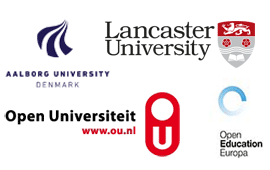

Making new connections: interactive network graph to enhance sharing opportunities for TEL practice
Tünde Varga-Atkins, eLearning Unit, Centre for Lifelong Learning, University of Liverpool
This focus of this preliminary study is located in continuing professional development of university-based teaching practitioners. The study reports on the design of a prototype tool, an interactive visual network diagram. The purpose of the diagram is to enhance the sharing of technology-enhanced learning (TEL) practice between teaching practitioners. It enables them to identify fellow practitioners who use a particular technology in their teaching for problem-solving and sharing TEL practice. Design principles combine two theoretical approaches: Communities of Practice and Social Network Analysis. This paper argues that the complementarity nature (Cummings and van Zee 2005; Wenger, Trayner and de Laat 2011) of the two frameworks can offer good design principles for the prototype diagram to share TEL practice. For a system to identify potential connections made between professionals with the same topic of interest (a particular technology) within a wider domain (teaching practice), concepts from both theories are needed. Such a visual representation would need utilise the concept of nodes and ties from Social Network Analysis, extend domain of interest to represent sub-domains from communities of practice as well as signalling potential connections to be made.
Findings of the preliminary stage of design-based research methodology included the potential usefulness of the prototype to identify peers' help for solving a problem, getting ideas on how people use a particular technology, sharing teaching practice and also practical tips for introducing the technology to students. Procedures to be supported included populating the diagram with data, maintaining the currency of data, user interactions such as viewing the visualisation, selecting relevant nodes/links, contacting selected contacts or downloading/exporting data. Another key feature of the diagram should be to visualise the potential value of future links to be made for the user. Participants also reported challenges of such a visual prototype. Firstly, whether practitioners would actually contact those whom they do not yet know and secondly, how would practitioners become aware of the diagram's existence? The paper concludes with implications to theory and practice, pointing towards the strength of combining two theoretical approaches, Social Network Analysis or Communities of Practice, in exploring the informal sharing of practice in organisations.
Keywords
professional development, sharing practice, technology-enhanced learning (TEL), visualisation, higher education
Joint Organising Institutions
| Conference Travel and Accommodation |Doctoral Consortium | Past Conference Proceedings | Contact |